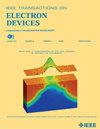Review of Nanosecond Pulse Generator With High-Power Switching Devices
IF 2.9
2区 工程技术
Q2 ENGINEERING, ELECTRICAL & ELECTRONIC
引用次数: 0
Abstract
A nanosecond pulse generator (NSPG), with a high peak voltage, short-duration pulsewidth, high repetition rate, and fast rise/fall times, has gained traction and is now used in several applications such as plasma, biomedical, and industrial. The pulse characteristics vary with the type of application and these are affected by the choice of the switching devices in any topology and other elements of NSPG. Therefore, a variety of NSPGs have been researched, which makes the selection of any particular topology for NSPG development a challenging task. Thus, to address this gap, the literature presents a review of several conventional and state-of-the-art topologies of NSPG with high-power (HP) switching devices such as spark gap, solid-state switches, magnetic switches, and other elements for various applications. It also presents the pulse’s duration, voltage, current, power, rise/fall time, and repetition frequency for different applications. Furthermore, strategies for minimizing switching losses and other losses that substantially lower pulse generator efficiency are also discussed. Finally, a concise evaluation of available switching devices and other elements of NSPG, their pros and cons, and future directions are discussed to provide a clear understanding to designers and researchers.使用大功率开关器件的纳秒脉冲发生器回顾
纳秒脉冲发生器(NSPG)具有峰值电压高、脉宽持续时间短、重复率高和上升/下降时间快等特点,目前已在等离子体、生物医学和工业等多个领域得到广泛应用。脉冲特性随应用类型的不同而变化,并受到任何拓扑结构中开关器件的选择以及 NSPG 其他元素的影响。因此,人们对各种 NSPG 进行了研究,这使得为 NSPG 开发选择任何特定拓扑结构成为一项具有挑战性的任务。因此,为了填补这一空白,文献综述了几种传统和最先进的 NSPG 拓扑,包括火花间隙、固态开关、磁开关等大功率(HP)开关器件,以及用于各种应用的其他元件。报告还介绍了不同应用中的脉冲持续时间、电压、电流、功率、上升/下降时间和重复频率。此外,还讨论了如何最大限度地降低开关损耗和其他大大降低脉冲发生器效率的损耗。最后,还讨论了对现有开关器件和 NSPG 其他元件的简明评估、它们的优缺点和未来发展方向,以便让设计人员和研究人员有一个清晰的认识。
本文章由计算机程序翻译,如有差异,请以英文原文为准。
求助全文
约1分钟内获得全文
求助全文
来源期刊

IEEE Transactions on Electron Devices
工程技术-工程:电子与电气
CiteScore
5.80
自引率
16.10%
发文量
937
审稿时长
3.8 months
期刊介绍:
IEEE Transactions on Electron Devices publishes original and significant contributions relating to the theory, modeling, design, performance and reliability of electron and ion integrated circuit devices and interconnects, involving insulators, metals, organic materials, micro-plasmas, semiconductors, quantum-effect structures, vacuum devices, and emerging materials with applications in bioelectronics, biomedical electronics, computation, communications, displays, microelectromechanics, imaging, micro-actuators, nanoelectronics, optoelectronics, photovoltaics, power ICs and micro-sensors. Tutorial and review papers on these subjects are also published and occasional special issues appear to present a collection of papers which treat particular areas in more depth and breadth.
 求助内容:
求助内容: 应助结果提醒方式:
应助结果提醒方式:


